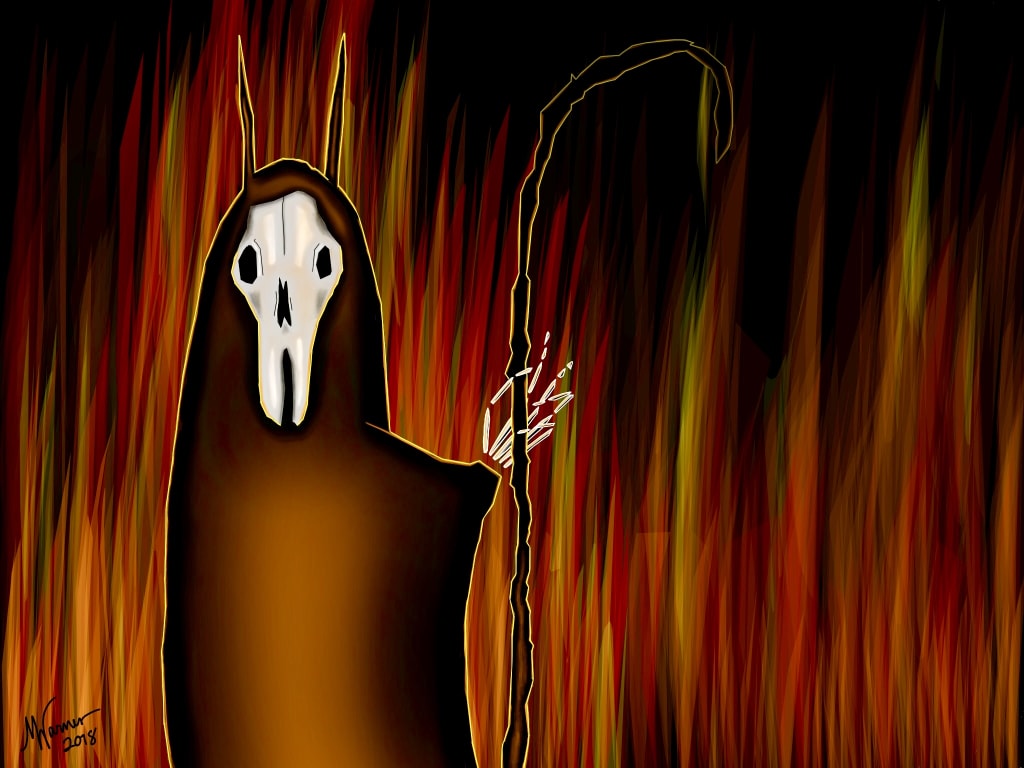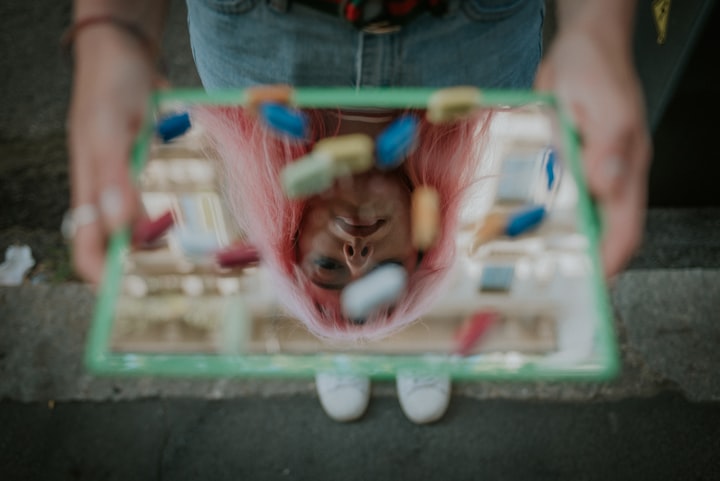Trauma Part Three
My Journey Through PTSD Treatment and Recovery

Please follow this link to read preceding articles.
Benzodiazepines
In 2012, I had a severe reaction to Xanax. I’d developed severe anxiety after my hysterectomy when I was trying to get on a complete regimen of hormone replacement therapy. At age 28, I had menopausal levels of reproductive hormones, which can pose serious health risks. Starting hormones was a shock to my system and I had unrelenting insomnia. After not sleeping several nights in a row, the nurse practitioner who was prescribing my hormones prescribed Klonopin. It was only a matter of weeks before the dose I was on felt ineffectual. I switched to Xanax at a higher dose as I was also still trying to get on doses of hormones that felt right for me.
Something went terribly wrong, and I’ll never know exactly what happened inside my body. I now know that reproductive hormones affect the way the liver metabolizes and eliminates toxins, and I know that one of the potential side effects of Xanax is severe mood disregulation. I was suddenly plunged into depths of despair I never knew were possible. They came in waves. I had dealt with double depression (clinical and major depression) most of my life. I had been suicidal before. This wasn’t like that. I wanted to die to end the horrific mental pain I was in. I had never experienced anything like it. The waves would bring me to my knees and all I could do was sob. I knew I needed help, and I was fortunate to get a referral to be admitted to the hospital’s mental health wing.
I was hospitalized for two weeks. They tried several different antidepressants. I was on a small dose of a beta-blocker to help with the severe anxiety I had between waves of despair. Everything gave me terrible side effects. Pain, incontinence, dangerously low blood pressure, sleep walking, dizziness, loss of appetite, rapid weight loss, insomnia. I only achieved brief moments of micro-sleep, or heavily drug-induced sleep during those two weeks I was in the hospital, and I continued to have the waves of despair. I saw the gates of hell.
I was talking to a psychiatrist every day. I knew there was something chemically wrong with me. Despair like that, the “severe mood disregulation,” doesn’t exist in the natural human mind. It’s outside of the normal human experience. Looking back, I can’t even begin to grasp or remember what it felt like. It was too traumatic. Too intense. Phones were considered contraband, but I snuck mine into my room every night to do research. I finally looked up the side effects of Xanax and brought my findings to one of the psychiatrists. They switched me from 4mg of Xanax to 2mg of Klonopin before releasing me from the hospital.
Going from 4 mg of Xanax to 2 mg of Klonopin is a significant cut in dose. I had severe withdrawal symptoms for three weeks, although I was able to avoid waves of panic attacks by getting exercise. I continued to try to cut the Klonopin once the withdrawal symptoms abated and I’d adjusted to the new dose, but the withdrawal symptoms were too severe. I spent all my time depersonalized on the couch, unable to function or perform basic tasks. I reinstated my dose and found online resources to help withdraw from benzos. Brushing up on high school chemistry, I learned to make a Klonopin solution and titrate down by very small doses. Cutting my dose every two weeks, it took a year of titration and withdrawal to permanently get off benzos.
One such resource that I used to help me and my prescribing psychiatrist during withdrawal was the Ashton Manual. Professor Heather Ashton is an Emeritus Professor of Clinical Psycho-pharmacology at the University of Newcastle upon Tyne, England. Her work has centered around psychotropic drugs and how they influence human behavior. She ran a benzodiazepine withdrawal clinic for twelve years, has written over 50 scholarly papers about benzodiazepines, and she was the key expert regarding benzodiazepines during litigation against drug companies in the U.K. in the 1980s.
One of the consequences of protracted benzodiazepine withdrawal, according to Professor Ashton, is Post Traumatic Stress Disorder.
Beginning EMDR
Before beginning phase two, my therapist Saya had me complete some homework. She had me document my five most positive memories, beginning from earliest and progressing to most recent. It was more painfully heart-wrenching than one might expect. I kept putting it off, finally finishing at the last minute. My pleasant childhood memories are not of joy or overwhelming happiness, but of contentment and safety. Although I’m 35, I stopped at age 22. My health began to decline at age 23. I’ve had positive experiences since then, but many feel jaded. Illness and trauma put a pall over everything, including how memories are accessed.
Saya and I began my session by going over how I’ve been doing since I saw her last. I learned that my ex was logging into my email before I changed the password, which was upsetting and violating. We didn’t spend much time before delving into phase two of EMDR - resource development. Saya first asked me to compartmentalize my problems so I can put them aside until I’m ready to deal with them in therapy. This is called “The Container.” I had already done this with physical reminders at home, putting everything into a bin under the house, but Saya also wanted me to imagine a container to hold painful events and memories in my mind. She said this could be anything—a vault, a rocket ship, a filing cabinet.
I decided to use a fictional tower that I had already imagined as part of a science fiction world I developed. Inside the tower is a hall that is infinite, with infinite doors leading to endless possible places. It’s locked using a combination of a traditional key and biometrics, and it is guarded by a powerful quantum computer. That is where I will be locking away my painful memories. Saya first asked me to think of an event that was a three or a four out of ten on the distress scale. I chose a fight he and I had not long before the breakup. She didn’t ask me to describe the event, just how it made me feel. Abandoned, lonely, angry, misunderstood, resigned, withdrawn. She then asked me to imagine the event as an object that I would lock away in the tower. I chose a door in the infinite hall and threw the black cube inside, locking it away.
Saya then asked me how I felt. The tension and anxiety weren’t gone, but they had lessened. She had me hold an electric node in each hand that she called buzzies. They buzz and light up, alternating between left and right. I looked at each buzzy as it buzzed and lit up, looking left and right at a steady pace, while holding onto how my mind and body felt less anxious with that painful black cube locked away.
Next we tried to move up to an event that would be ranked a five, but I couldn’t do it. I’ve talked about the event I thought of. I journaled it and read about it. I couldn’t fully access it for the purpose of locking it away. Saya suggested that I had already locked it away, which was okay. Reliving painful memories and traumas is not necessary for recovery. We talked about the anxiety that lives in my chest, and she tried to guide me through visualizing it and locking it away in the container. The hot, red, angry ball resisted. I couldn’t remove it. It couldn’t be cooled or squelched. Saya said that was okay too, and it was good I know myself well enough to recognize that the anxiety is a part of me. Locking it away will take time and effort.
Next we worked on my “Safe Place.” This is a place in my mind I can go to when I feel overwhelmed. I chose the living room of my childhood home when I was a young child, around age seven, or perhaps younger. It was the late 80s. There was brown carpet, textured wallpaper, a velour couch and chair, teak coffee tables, and an old tube TV from the 70s. I lived there until age 14, so holding onto what that room looked like when I was very young was difficult. The carpeting, wallpaper, and furniture all changed, and the kitchen was remodeled to make an open floorplan. Perhaps that doesn’t really matter, as it was always a safe place. I was always happy to be there, whether I was doing homework, watching TV, playing games, or listening to music. Saya recommended a tapping exercise to do while I imagine my safe place. I imagined touching all the textures, rearranging the furniture, sitting in the chair, and looking out the window.
The container and my safe place are exercises I can use between therapy sessions when I become distressed or overwhelmed. Saya also asked that I journal these incidents to present at our next session in a week.
About the Creator
Hecate Jones
I have a degree in psychology. I’m an author and an artist who has experienced trauma and I’m living with Mast Cell Activation Syndrome. I have interest in numerous topics and enjoy research.






Comments
There are no comments for this story
Be the first to respond and start the conversation.